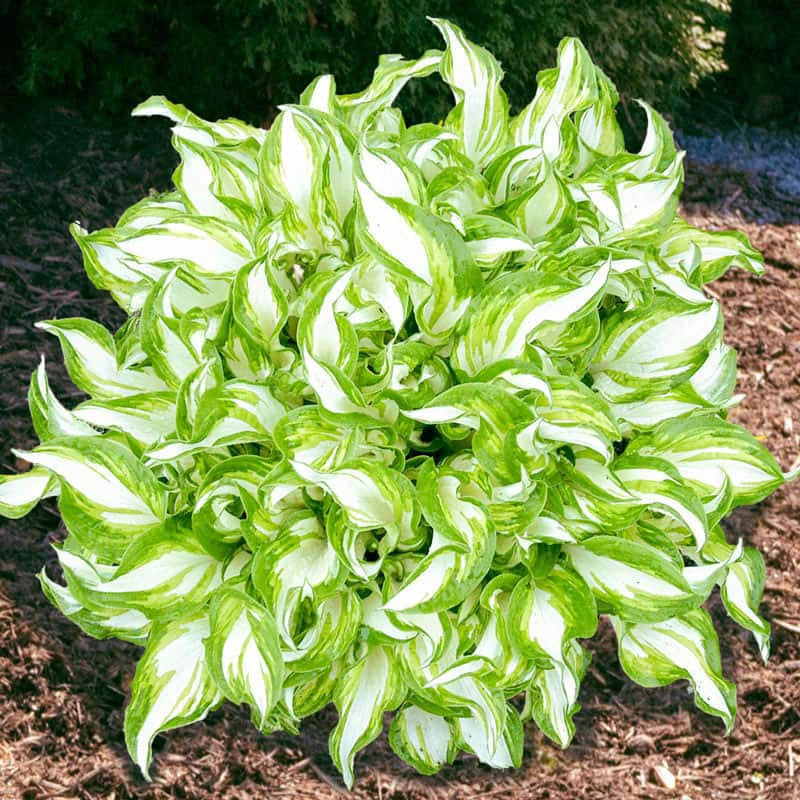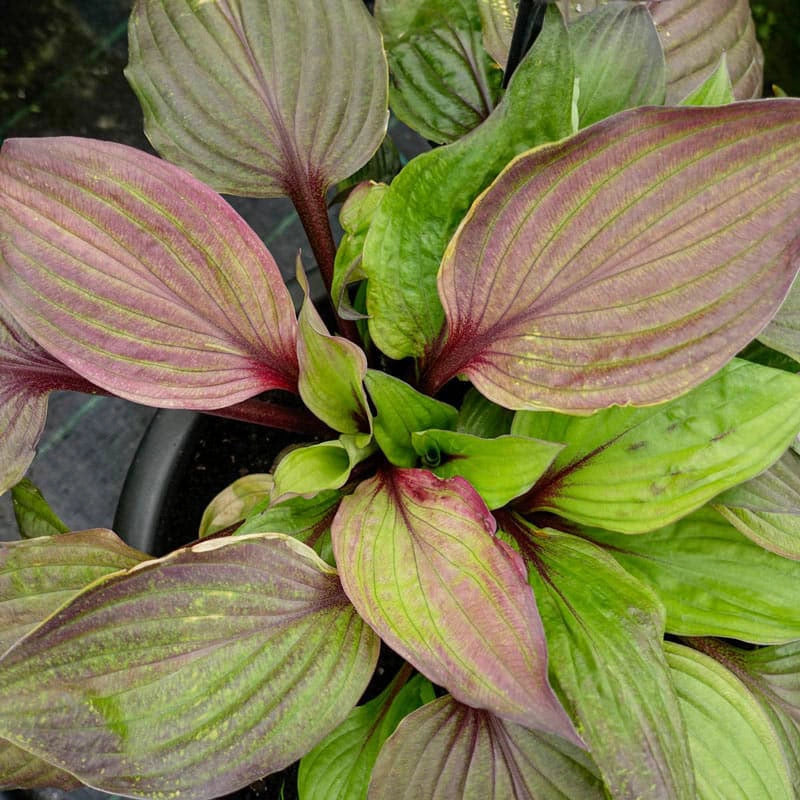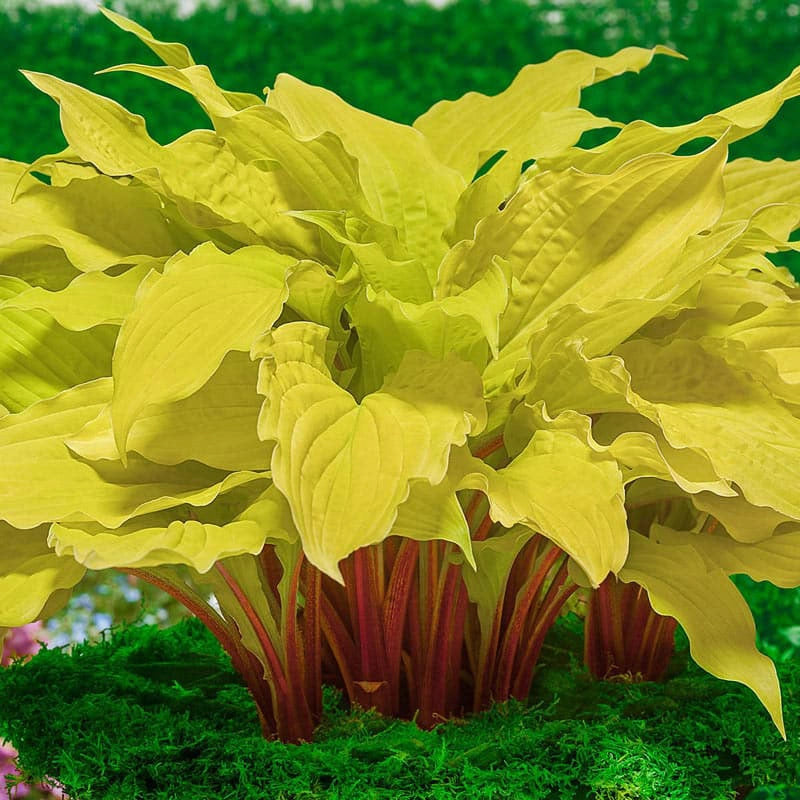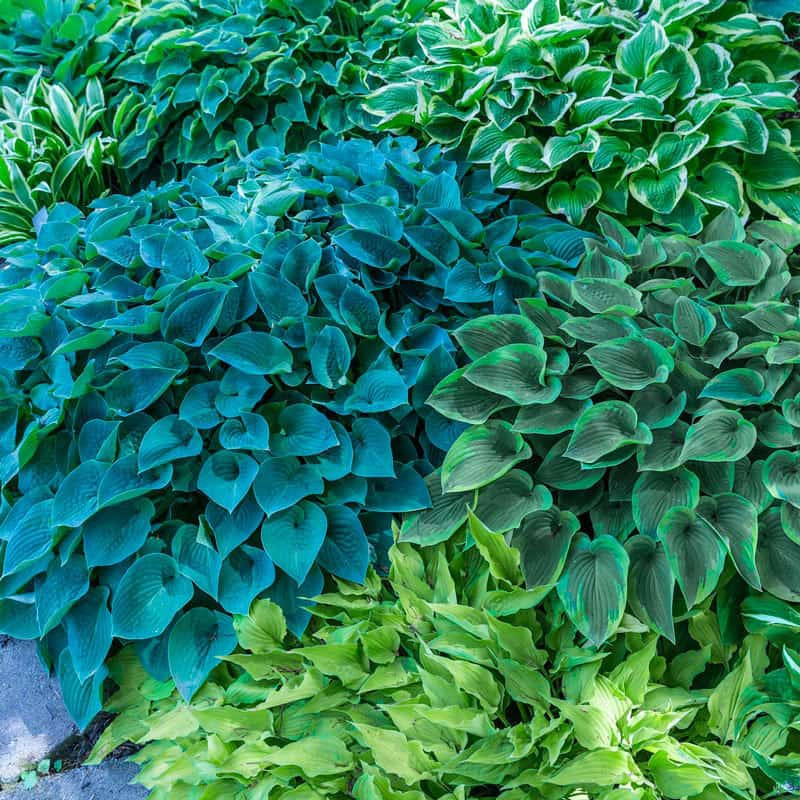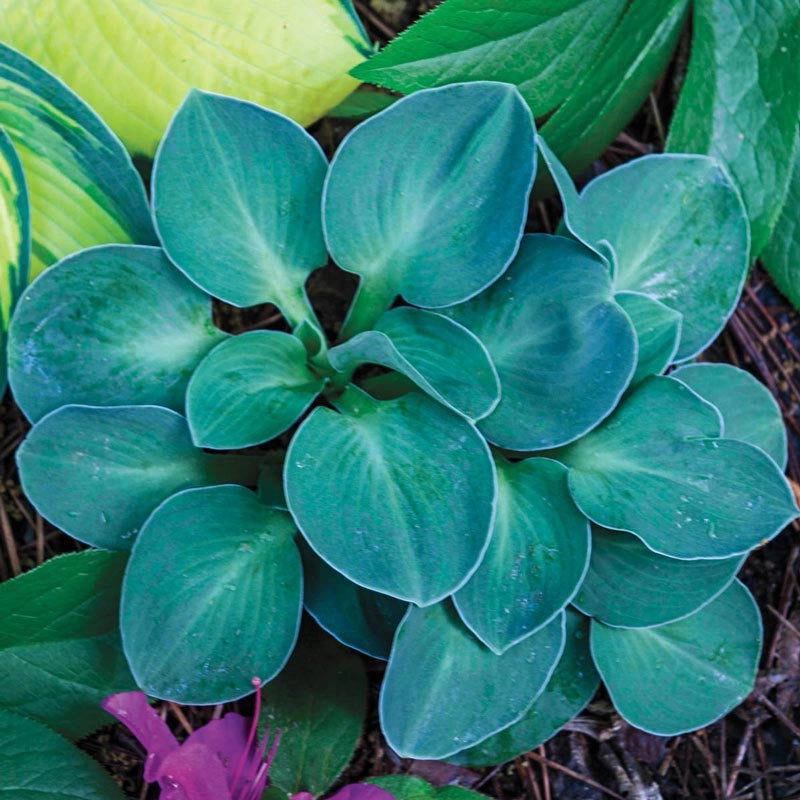11 products
-
Ki-Ren Jyaku Double Flowering Hosta
 Ki-Ren Jyaku Double Flowering Hosta
Ki-Ren Jyaku Double Flowering Hosta- Regular price
-
$22.99 $62.99 - Regular price
-
- Sale price
-
$22.99 $62.99
Hosta plants produce trumpet-shaped flowers that will bloom from tall spikes in the summer and their flowers will last into frost. Planted alongside smaller blooming plant varieties, well-placed hostas can do wonders for your garden composition. Whether you're seeking a burst of color for a darkly shaded garden, or a majestic ground cover, you'll find the right hosta plants at Spring Hill. Learn more about the benefits of gardening in the shade with hostas.
What are Hosta Plants?
Hosta plants, sometimes called "Plantain Lilies" or gib?shi, are among the most popular and best-selling shade perennials. While hostas do sprout bell-shaped flowers, they're best loved for their stunning, wide leaves in glossy textures. These plants are extremely hardy, spread out readily, and require little maintenance. Incredibly versatile, hostas are grown in a wide range of colors, textures, and sizes–these plants truly show off how stunning foliage can be. Some of the most famous colored hostas are First Blush Hosta, Lipstick Blonde Hosta, and Autumn Frost Hosta. Browse our collection of hosta plants and add color and interest to your shaded garden.
Nearly all hostas thrive in partial or full shade, although some may tolerate more sunlight. With hardiness to a wide range of zones, as well as a tolerance for heat, humidity, and even pollution, hostas are popular across the United States. The picture of lushness and lively green, these plants are the ideal solution to hard-to-grow-in shady spots.
How to Plant Hostas
Hosta plants make a great addition to many garden settings. These plants are usually used to brighten up shady spots in a landscape since hostas are known to be shade tolerant. Choose a location with well-draining soil and at least partial shade to ensure the success of your hostas.
To plant your hostas, dig a hole in the soil and make sure the hole is as big as the plant's root ball. The hole diameter should be double the plant's root ball size, and deep enough that the crowns–where the stems meet the roots–are level with the existing soil. It's a good idea to mix in some organic matter in the planting holes, as it will enhance the soil's structure and encourage the roots to grow.
Once they're planted, backfill firmly, water in well, and fertilize your hostas with a balanced, slow-release fertilizer. If you struggle to keep the area around the plants moist, add some mulch around the base of your hostas to retain moisture in the soil.
How to Care for Hosta Plants?
Hosta plants thrive in rich and well-drained soil. While some hostas prefer shady areas, others can handle a sunny spot. It's essential to read the label on each hosta plant variety to ensure the kind you have is planted correctly. Hostas usually require an average amount of watering. It is important to keep your plant watered during the dry weather season. However, make sure not to overwater your hosta plants to avoid rotting.
Hostas are resistant to damage by pollution or heat, but they do prefer moist soil–and, unfortunately, they tend to house slugs and snails. If you're finding mysterious holes in your hostas and slime trails around your garden, use slug bait, beer traps, or diatomaceous earth to keep them at bay.
What is the best time of year to plant hostas?
Hostas should be planted in spring or fall when they'll actively grow roots but the height of summer heat isn't beating down. Hostas are usually shipped as bare root plants, and, if you buy hostas online from Spring Hill, we'll ship them at just the right time for planting. Plant them as soon as you receive them, and your hostas will be off to a thriving start.
Can you order hostas online?
Hosta plants are incredibly popular for ordering online, and buying hostas online is easy. Hostas are one of the best plants for growing through propagation, meaning that they can be divided, shipped, and replanted without much damage. One advantage to buying hostas online? The incredible selection available online. From miniature "blue-eared" hostas to giant plants, you can find the perfect mix of hostas when purchasing these shade plants online.
Where is the best place to plant hostas?
Hostas are quite hardy, and their bulletproof nature makes them extremely popular in the United States. They flourish in zones three through nine and don't need to be lifted in winter. Some hostas actually thrive in colder zones, despite their tropical looks, as snow provides lots of moisture for springtime growth. However, there are warm-zone hostas that perform quite well in temperate or even tropical zones.
So, how do you choose the right location for your hostas? Most varieties can tolerate some early morning sun, but they prefer shade in the afternoon. Hosta tends to like rich soil that isn't compacted. Use compost or loam to aerate any clay or heavy soil, and to add nutrients. Hostas are a great selection for any shade garden, and they're happy to grow alongside buildings and fences. Plant them near shorter shade perennials, such as astilbe or toad lilies, to create a magical, lush look in the shade.
What are the fastest growing hostas?
Most hosta will happily multiply, usually in just a season or two. These plants divide easily and naturalize wonderfully. Nearly all hostas grow quickly and fill in the garden in no time flat. The fastest-growing hostas are often the largest varieties, although some compact plants have fast growth rates as well. Empress Wu, Sum and Substance, and Humpback Whale Hosta grow quickly. In addition, "straight-color" hostas tend to grow more quickly than variegated varieties. Providing adequate sun–not deep shade–can also help your hostas grow quickly.


